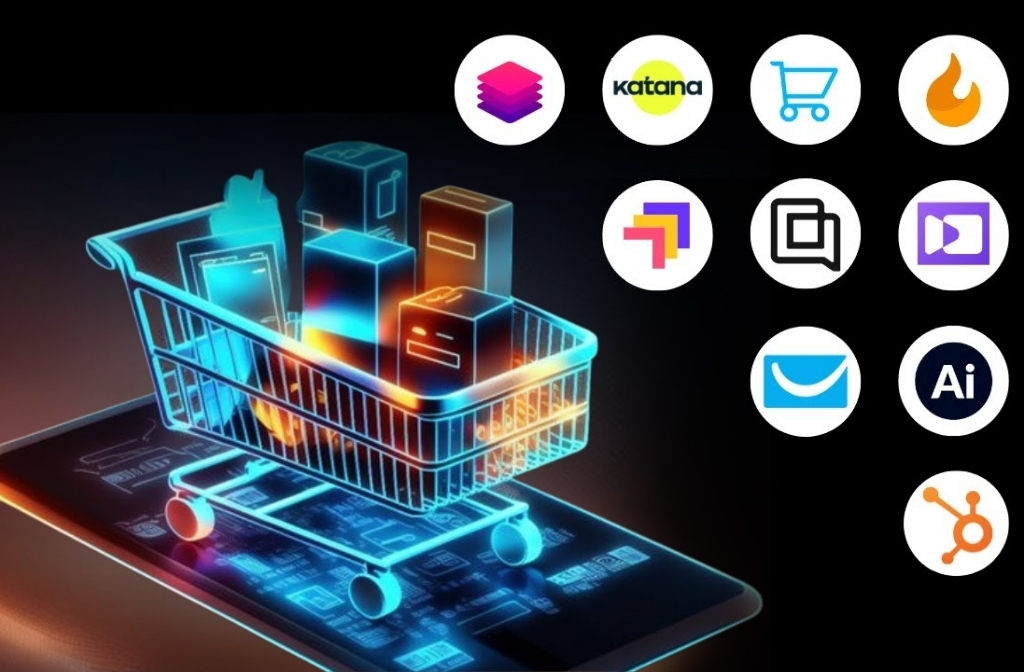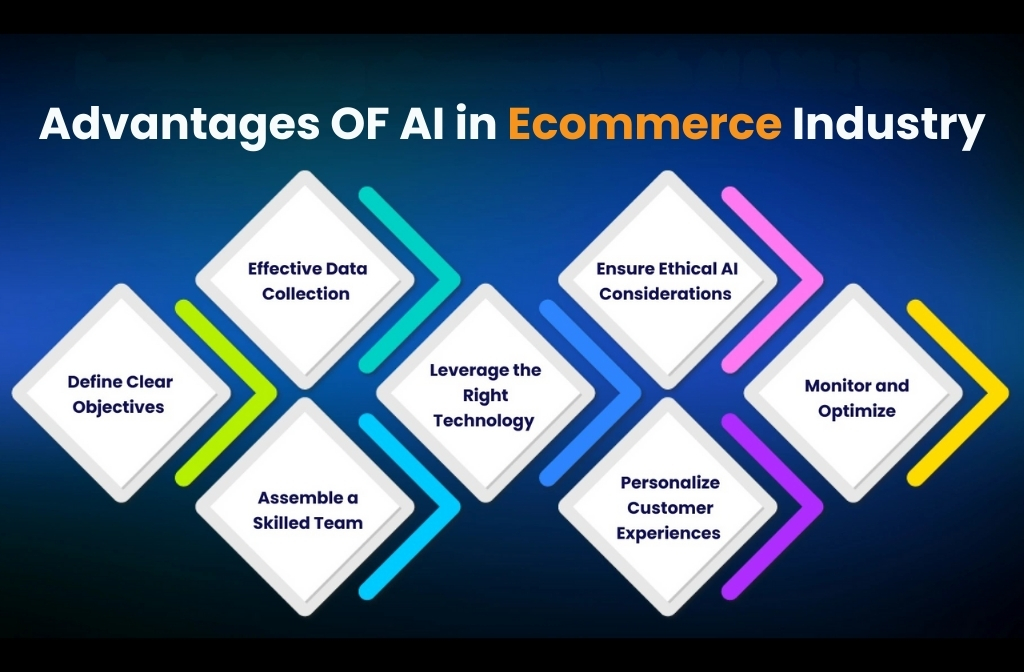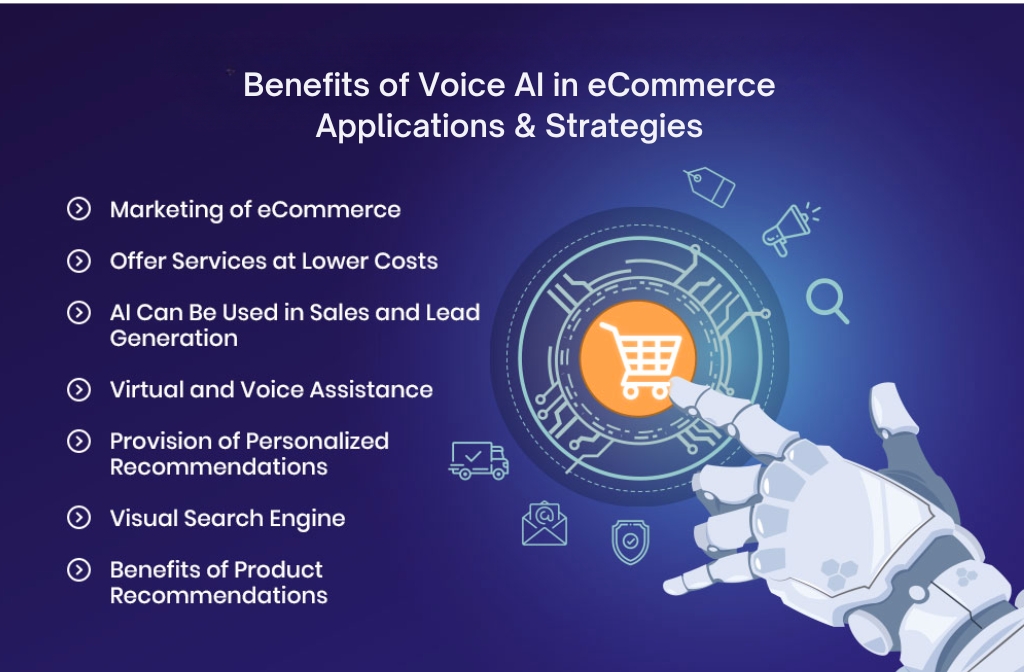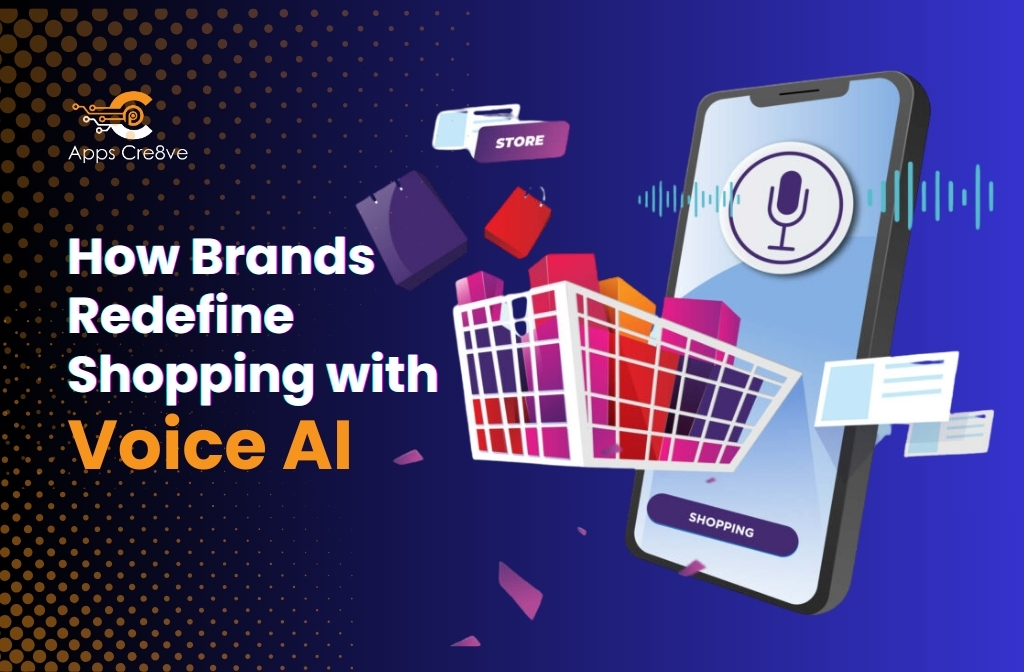Envision the ease of finding a truly exceptional sneaker pair through your device, transforming a simple search into a premium discovery experience. Voice AI is the wonder that changes e-commerce businesses. It would be easier to simply state your requirements and receive them within a few minutes.
Clients want timely and less complicated communication with companies. As a result, the biggest brands are implementing Voice AI to provide clients with the feeling of effortless talking when shopping online.
Apart from Nike’s voice-activated sneaker drops and Domino’s simple pizza ordering, Voice AI is not only a rallying cry a connecting link between human longing and instant satisfaction. Solutions like these are reshaping the retail landscape, and you can learn how through our guide with plenty of real-world examples and strategies to help your brand join the revolution.
Introduction: The Rise of Voice AI in eCommerce

Voice AI is a big hit in the eCommerce market and has changed the way users interact with the site, from passive viewing to active voice-driven discovery.
More than 75% of U.S. homes have smart speakers, and voice assistants perform billions of queries every day, so brands are definitely not on the sidelines.
Voice AI employs natural language understanding to comprehend spoken instructions, suggest products, and finalize the transaction, thus simplifying buying to a mere conversation with a friend.
Advantages of AI in eCommerce and How It Drives Conversions

Visualize this: You’re in the kitchen, handling multiple things at once, and rather than typing “best wireless earbuds under $50,” you just talk to your device. Voice AI is the future of hands-free, context-aware, real-life interactions.
According to projections, voice commerce will hit $82 billion across the globe by 2025, which is a 25% compound annual growth rate (CAGR). This is not just a claim; it is a need.
The conventional text-based search does not capture the subtlety of spoken queries such as “something comfy for a rainy day run,” resulting in higher conversion rates.
Brands that optimize for voice search can experience up to 35% increase in sales. Amazon, for instance, is among the top retailers that have already observed 20% of the revenue coming from voice channels, indicating that Voice AI is not only easy to use but also a revenue powerhouse.
What really makes me happy? Voice AI breaks down the barriers of shopping. It is a great help for people with visual impairments or busy parents. Who are then able to use eCommerce, which is transformed into an inclusive powerhouse.
As adoption climbs, brands that fail to recognize the trend will find themselves lost in the endless scroll noise.
Growth of Conversational Commerce and Voice Search

Conversational commerce, the fundamental feature of Voice AI, essentially integrates chatbots, voice assistants, and messaging to have seamless conversations.
The market is expanding: from a valuation of $8.8 billion in 2025, it is projected to reach $32.6 billion in 2030 with a 14.8% CAGR. As a result, voice search will be responsible for more than 20% of online queries by 2025, with the millennials being the most active users, but Gen Z following closely.
Imagine Domino’s: Their Voice AI collaboration with Alexa has made it possible for users to reorder the same set of items with just one sentence, “Hey Alexa, pizza time,” thus cutting the order time by 30%.
The growth is not random—it is supported by AI’s capability to recall preferences, promote cross-platform app development for sells, and even return items during the conversation.
Moreover, when devices such as smart fridges become part of the game, voices are expected to account for 30% of e-commerce sales by 2030. The brands’ question is whether they are prepared to listen?
Voice AI Transforming Shopping Applications

Voice AI is changing the way we shop through apps means that they are evolving from catalogues, which are simple and static, to their dynamic counterparts.
Consider the innovative agreement between Nike and Google Assistant, for instance: The consumers were able to speak the order of the limited-edition Adapt BB sneakers in 2019, and as of 2025, it has gone to complete app integrations thanks for the mobile application development company like Apps Cre8ve. Where the AI selects the sizes based on past fits and the weather data.
Beyond Swipes: How Smart Voice AI Anticipates Your Next Buy
Voice AI can no longer be a simple swiping experience as it is able to anticipate the needs of the customers.
Sephora’s Virtual Artist app also has voice-guided makeup tutorials that are voice-activated. The users just need to say, “show me red lipsticks for olive skin,” and AI will fetch the personalized visuals along with the buy links.
At the same time, Amazon’s Echo devices have transformed passive listening into active shopping, but Rufus – their AI assistant – is the one that does the job for complex queries like “compare noise-cancelling headphones under $100 with good battery life.”
But these changes are more than just upgrades in technology. They are emotional bonds. The customers are not treated as mere sales targets but rather as people whom the brand understands and connects with on a personal level.
The embedding of Voice AI in apps leads to an average of 47% higher engagement and a 20% drop in cart abandonment. Hence, the outcome? The loyalty that lasts. Also learn about integration of payment gateways in e-commerce platforms.
Let me share with you a short list that shows the brands that are using Voice AI to drive their app engagement:
| Brand | Voice AI Feature | Transformation Impact |
| Nike | Voice-activated product customization | 25% faster purchase completion |
| Sephora | Voice-guided beauty recommendations | 40% increase in personalized trials |
| Amazon | Rufus for voice queries | 20% of sales via voice channels |
| Domino’s | Preference-based reordering | 30% reduction in order friction |
These figures depict the main reasons why Voice AI is not a choice but a unique feature that converts mere browsers into buyers.
Benefits of Voice AI in eCommerce Applications & Strategies

The benefits of Voice AI are not just buzzwords; they provide real advantages, such as support 24/7 and hyper-personalization.
Most of the ecommerce development solutions companies says. That the use of Voice AI can lead to time saving of up to 4 minutes per call.
Moreover the price for each interaction is only $0.70, one-fifth of that with a human agent. However, the question remains as to how one could utilize it. Let’s take a look.
Optimizing Product Listings for Voice Search Queries
Voice search queries are conversational. “Hey, find me eco-friendly sneakers for wide feet”. So listings must match that vibe.
Use long-tail keywords like “best organic cotton t-shirts for summer hikes” in titles and descriptions.
Nike is really good at this; they optimize for schema markup, which makes Google Assistant get the rich snippets.
Tip for your strategy: Use tools like Google’s Voice Search Console to audit your listings; brands that do this report 15-20% traffic lifts.
Make it more attractive: Add FAQs in a conversational tone to be ready for AI responses, thus turning the searches into instant carts.
Choosing the Right Voice AI Tools and Platforms
Long story short, the best platform is like your second-best self. Top-liners in eCommerce are Google Dialogflow for an easy Assistant integration, Amazon Lex if you want a shop with Alexa, and Deepgram if you are looking for a real-time transcription service.
Twilio is what Domino’s went for if they were looking for a voice order that is scalable and can manage the highest loads with no interruptions.
Think about it this way: First, you work with Voiceflow, Shopify, and your clients. Low-latency metrics are your secret weapon. Keep the conversation going; do not let it come to a dead stop because of a lagging bot.
Ensuring Data Privacy and Building Customer Trust
Voice AI runs on trust, which is the main feature of the whole system. As those queries disclose quite intimate preferences, companies need to put a GDPR-compliant platform. That anonymizes data at the forefront.
Amazon gains trust through easily understandable consent prompts on the Echo, such as “May I use this for recommendations?” The outcome? 89% customer retention increase.
Such tactics may include the use of transparent policies and an opt-in feature. Sephora’s method allows users to decide on data sharing during the session.
Make the users feel attracted by telling them why: “Your privacy allows us to offer you better recommendations.” In a world without cookies, such honesty turns the doubters into loyal followers.
Future Trends: Voice Commerce and AI Innovations
When we get to 2025, Voice AI will be going beyond just being an assistant to being an oracle. You will be able to have multimodal interactive sessions where voice can be combined with AR to have virtual try-ons.
For instance, you can say “show me this dress in my size” and the dress that fits your size will be visually placed on your mirror. Just the retail Voice AI market is going to be increasing at a 31.5% CAGR until 2030. Also read this blog in detail.
The Role of Natural Language Processing in Voice AI
Natural Language Processing (NLP) is the main ingredient, interpreting different accents, slang, and users’ intentions with fascinating exactness.
Technologies such as GPT-5 greatly contribute to NLP success by allowing context memory-changing requests in the middle of a conversation, e.g., “stop, make it vegan.”
Companies such as Levi’s have taken advantage of advanced NLP to provide support in multiple languages, and thus, they have been able to increase their customer base by 25%.
Get your plan ready for the future: Commit to the NLP implementation that will allow you to manage up to 70% more query variations and hence, make the Voice AI sound more like a real person.
Future of Voice AI Shopping
Voice will be the main factor in one-to-one marketing through predictive analytics in 2025. AI giving you gift suggestions according to your calendar.
New technologies such as emotion-identifying Voice AI (for example, through ElevenLabs) might customize voices: cheerful for joy, comforting for complaints.
The social aspect of trade will deliver this further; the TikTok voice connections, allowing direct buying from videos, will be the trend.
Downsides? Access to technology and ethics, but if correctly addressed. Voice AI might simplify online shopping by 80%. Look forward to it. It is not the future of typing, but of speaking.
Signing Off: Redefining the Shopping Experience With Voice AI
Voice AI is not going to revolutionize eCommerce by any means, but instead, it is elevating the market from the immersive drops of Nike to the usual orders of Domino’s.
Conversational flows, natural queries, and trust being the top priority, brands would be able to achieve a $32.6 billion market value, where loyalty and growth would be their key.
How about we check if we are ready for voice technology? So a simple integration is the way to go. Learn how we redefine eCommerce shopping in our blogs and stay ahead.
Listening to customers and seeing how shopping gets changed from a mere transaction to a conversation. What will be your first voice command? The future of retail is calling—answer it.
Frequently Asked Questions:
How is eCommerce enhanced by Voice AI?
It lessens the time that you need to spend shopping and also increases the conversions by 35% with no need for the use of hands, logical and easy interactions for all users.
What companies are the best at voice commerce?
Voice assistants are being used by Nike, Sephora, Amazon, and Domino’s to improve individualized digital wellness & e-commerce experiences and expedite deliveries.
How can businesses optimize for voice search?
Use long-tail keywords, schema markup, and natural-language FAQs to be in sync with conversational queries, increase traffic by 20%.
What are the best Voice AI platforms?
Google Dialogflow, Amazon Lex, and Voiceflow are just some of the great companies that are offering easy integration for the development of scalable and low-latency voice-driven e-commerce solutions.
Is Voice AI secure for shoppers?
Platforms that comply with GDPR and open consent procedures protect data privacy, fostering trust and keeping 89% of clients.
